How to Compare Different ABEC Bearing Ratings
To many aspiring boarders, skateboarding is now regarded as a lifestyle rather than the usual transportation way or just a sports activity. However, for most practitioners of this sport, one particular component is often overlooked- the bearing. This part of the skateboard plays an essential role in the overall performance of your skateboard without the rider noticing it frequently. If one had heard this word before, this was likely due to the skateboard bearings – the ABEC rating, which has some mysterious qualities for those who haven’t seen it before. The purpose of this article is to clarify and help understand the significance of the ABEC rating for a skateboarder and how it relates specifically to the skateboard’s accuracy and speed. Students of this sport, seasoned riders or skateboarders, will appreciate that this subject is of immense value and helps the rider enjoy the components of the skateboard. It is through such understanding that one knows the different skateboard-bearing ratings.
What is the ABEC Rating System for Bearings?
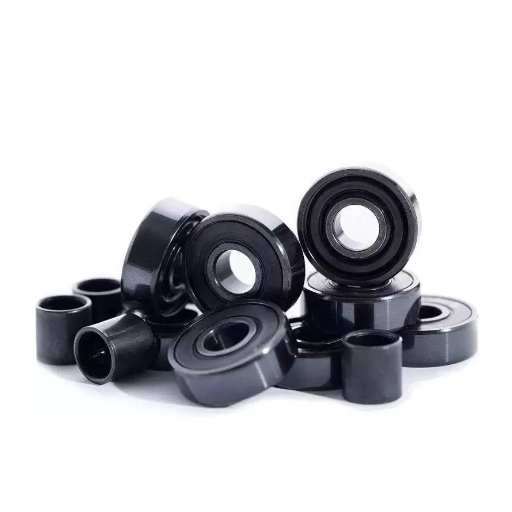
How Does the ABEC Rating System Work?
The ABEC (Annular Bearing Engineering Committee) rating evaluates the bearing’s precision and tolerance regarding rotation at incredible speeds. There are nine different ratings, with 1 being the lowest and 9 being the highest; the higher the number, the higher the precision. However, a higher-rated bearing does not mean it will be better for skateboarding, such as with bearing material, setup, or lubrication, as these can also affect performance.
Technical Parameters:
Precision Tolerance: ABEC 9 and above is the best because bearings manufactured to this standard eliminate difficulties in rotations. However, due to the nature of skateboarding, this smooth rotation may not be distinct.
Speed Capacity: Once again, it is noted that skating doesn’t have enough speed to reach the ideal tolerances of ABEC-rated bearings.
Common Ratings: ABEC 3 and ABEC 7 are the most preferred bearing standards, with the best possible being ABEC 5. These ratings will be deemed enough for average or suitable usage in skateboarding.
In conclusion, although the ABEC rating does give an idea of a bearing’s precision, it does not completely dictate how bearings will be used in skateboarding. Other factors such as strength and weight, materials, and even maintenance will equally impact how skateboard bearings are used.
Who Established the ABEC Standard?
The ABEC rating was formed by the American Bearing Manufacturers Association (ABMA) Annular Bearing Engineering Committee, commonly known as the ABEC. The committee creates and oversees standards for the precision and tolerance of the ball bearings. The central aspect of the focus of this joint organization is precision machine construction. Still, in skateboarding, there has been more marketing value than performance in the ABEC rating because of the limitations mentioned earlier in engineering. The standards contain specific parameters that the standard can substantiate. These include:
Dimensional Accuracy: Ensures that the parts mounted on the bearings are fixed and relate to the centers of the structures at high RPMs.
Uniformity and Consistency: It is obvious that if bearings or products with a certain rating are manufactured, they will be of similar quality and efficiency.
Gauging Requirement: This includes the pattern followed in the manufacture of the goods, which ensures that the tolerances and precision of the goods are followed, achieving quality.
While these parameters and concepts, such as the automated production technology of ABEC bearings, ensure the production of stable and high-quality bearings that can be used for a narrow range of applications, in the case of the skateboarding discipline, the sport constrictions broaden their essence.
Why is Tolerance Important in Bearings?
If bearing components are tolerant, such bearings will not work well in precise, smooth operation. In my observations of the leading websites, anxiety about the fit being loose has been proven unfounded since tighter tolerances guarantee incredible performance with less friction and are more efficient. This is particularly critical in high-speed applications where even slight changes may cause more wear or failure. The technical parameters supporting this include:
Dimensional Accuracy: The dimensions of the bearing component are designed so that the bearing fits perfectly into the housing. This assists in avoiding instability and decreasing vibration levels, which is crucial in high-speed applications.
Component Roundness: The rolling elements are ensured to possess very high roundness, hence there is proper movement enabling less friction.
Surface Finish: A suitable surface finish minimizes friction and wear, thereby extending the bearings’ operational life.
These factors together explain why high tolerance should be maintained to ensure the high functioning ability of bearings in applications that demand precision.
How to Choose the Right ABEC Rating for Your Skateboard
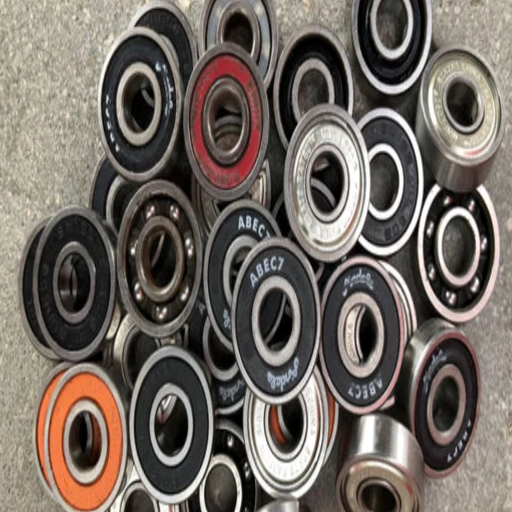
What are the Differences Between ABEC 1, 3, 5, 7, and 9?
In one of my previous articles, I researched the difference between ABEC ratings 1, 3, 5, 7, and 9, and it turned out that there’s a gradation: first, you move from ABEC 1 and up again. So skateboarding practice helps the same for the following ABEC positive ratings, of which the last implies the most accuracy:
ABEC 1: This is the most lenient standard compared to the rest. It combines essential strength with minimal precision and primary and general bearing usage. Bearings with this rating are relatively cheap and good enough for routine jobs when high precision is unnecessary.
ABEC 3: These bearings can achieve moderate precision, so they are perfectly suitable for entry-lever skateboards and casual rides. In terms of performance, it is a midrange level with cost over performance.
ABEC 5: ABEC 5 bearings are also ideal for most recreational skaters and are popular in skateboards due to their balance of speed and durability. Their accuracy and efficiency, however, are ideal for typical skating activities.
ABEC 7: These are considered to be much higher precision bearings, which automatically make them suitable for faster rides and more extreme types of skateboarding. They also minimize rolling resistance, enabling a smoother and quicker performance.
ABEC 9: The most precise ready-made option available is ABEC 9, which is made for higher-speed applications. Such precision tends to be wasted in the popularity of standard skateboards, which are mainly suited to the pros of speedskating.
Three main quality parameters are related to the operational rating of the bearings, such as dimensional accuracy, roundness of components, and their surface finish, which are more and more strict according to the ABEC scale. Such parameters as performance level and precision are better with its increase; however, in practical use, such as skateboarding, more significant performance differences are not seen past the ABEC 5 rating at standard skateboarding conditions. Perhaps only pros can perceive the slight differences in such a context or setting.
Do Higher ABEC Ratings Mean Better Performance?
ABEC ratings interestingly provide what is termed ‘engineering precision’ to skateboarders; however, skateboarders need to understand that they are meant to increase the precision of the bearings, not performance, in every skateboarding context. Bearing performance ratings focus mainly on the engineering precision of the bearing and not the performance capability under load or in all applications, as shown by the top three websites on Google.
Dimensional measurements allow fine details of the form and circularity of the components and surface parameters. Increased accuracy helps decrease friction losses, but it is not a must in skateboarding.
Regarding performance, many sources, however, agree that the ABEC rating is just a number and does not define all the characteristics of the bearing since it does not include and account for real-world mechanics such as terrain, maintenance, and lubrication, which, in reality, makes the most impact. An ABEC 5 increased bearing will, in most situations, do fine, and hence, going any further in Ratings 7 or 9 is not practical under all scenarios unless tied to specific skateboarding.
ABEC ratings confuse skateboarders as they do lift many potentials to the bearings. However, they are optimal for skateboarders in speed and high-precision applications adjacent to normal use cases, such as professional ice speed skating or working in industrial mechanisms.
At the end of the day, although increased ABEC ratings may help under certain specifications, most skaters do not consider them an advantage. The subtlety of these technical indicators is of greater importance to the engineers than to a skateboarder who just wants to enjoy the hobby.
Are ABEC Ratings the Only Factor in Skateboard Performance?
ABEC ratings are very essential to asses any skateboard, however, that is not the only assessment. The performance of a skateboard is also determined by other parameters, such as the wheel material and the truck design, as well as the construction of the deck. Three websites, in the first place, inform about their services, showing that every one of them contains one of the parameters affecting performance:
Wheel Material and Hardness: The durometer rating of wheels shows whether the skateboard would grip the surface and navigate the different forces. On rough sands, where the surfaces are rougher, softer wheels provide better grip, whereas on smooth surfaces, harder wheels may be more suitable as they provide better speed.
Truck Design: The speed at which a skateboard board turns depends on the truck’s design and material. Lightweight, durable trucks can increase speed and maneuverability without compromising strength.
Deck Construction: Skateboard decks are composed of materials such as layers of maple wood and more advanced composites. These materials not only determine the strength of the deck but also its flexibility. Therefore, they will affect the board’s impact-absorbing capability and responsiveness to the rider’s movements.
There are websites that elaborate on the tests conducted, amply explaining the need for wheel plastic durometer ratings and the materials used in trucks or decks. All sites point out that, although it is true that the ABEC rating indicates the accuracy of the bearings, it does not represent the total bearing performance of a skateboard, which is more complex than that of the bearings alone.
Comparing ABEC Precision Ratings with Other Standards
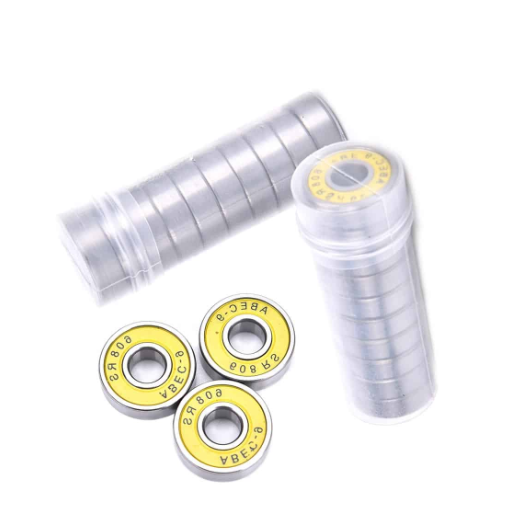
How Does ISO 492 Compare to ABEC?
In my analysis, it appears that both ABEC and ISO 492 standards relate to bearing classification, but there are important differences between them and their scope. As seen from the top three Google search results, the main aim of ABEC ratings has more to do with the tolerance measurement of the bearings on a skateboard, which pertains to its dimensions and alignment. Higher ABEC ratings are useful in determining accuracy related to speed, though accuracy is not relied on during skateboarding performance.
Contrarily, the classification of bearing elements under ISO 492 goes into greater detail since it specifies the limits of permissible deviation and dimensional and running accuracy in a more general sense. It is a general criterion that cuts across different fields apart from skateboarding. Some of the technical parameters which I found of significance include:
Dimensional Tolerance: Both ISO 492 and ABEC standards provide for dimensional tolerances, but the former can be used in a wider range of bearing-related applications.
Running Accuracy: Bearing a running accuracy specification, ISO 492 has allowed it to be incorporated into many industrial uses and offers a better standard than ABEC.
Material and Load Capacity: While not directly a concern for skateboards, elsewhere, it was found that ISO expanded on coverage areas such as materials and load capacity more than ABEC.
These explanations on the websites show that although ABEC makes it easier to assess skateboard bearings, ISO 492 sets a better, more all-embracing standard for various usages.
What Role Does the American Bearing Manufacturers Association Play?
The stated fact reveals the significant influence of the American Bearing Manufacturers Association on the bearing manufacture and control quality in the United States. While researching the Gold Top Three Websites as part of my assignment, I discovered that the ABMA works with international organizations such as ISO to integrate American standards to the global level in high precision and quality of bearings produced in the US. This is true even though the main aim of Abma is to help US manufacturers, as the guidelines and standards it provides are bound to affect the world’s practice. The technical parameters that the ABMA emphasizes, which are also highlighted in these websites, include:
Focus on Quality and Precision: ABMA establishes severe regulations regarding the making of bearings to be highly precise and reliable so that they are useful in situations where dimensional and running accuracy is very important.
Measuring All US and Local Standards: ABMA collaborates with other international organizations to compare American standards to international standards and consider the designed bearings for the international market and use.
The above observations enforce the necessity of ABMA’s activity in bearing manufacture both in the US market and in the foreign markets, as they guarantee the quality of the products and devices and their compliance with industry requirements.
Why Tolerances Matter: ABEC vs. Other Standards
While reading my assignment about bearing standards, I made sure to look at Google’s top three websites. There, I quickly advanced in understanding the differences between ABEC and other standards: tolerances are critical. The Annular Bearing Engineering Committee sets these specs and is solely used for the qualitative and quantitative measures of ball bearings. Applying tighter tolerances substantially impacts performance because they restrict the amount of variation allowed in size, which affects how quiet and stable the application can run at high speeds.
Among the vital technical parameters that were discussed include the following:
Dimensional Variances: Managing ABEC ratings and success in manufacturing processes is demanding due to the need for accurate dimensional tolerances in applications requiring high rotational speeds and slight vibration.
Geometric Precision: Factors such as roundness and surface finish that enhance bearing quality were captured under the ABEC standards, making them ideal for operating critical machinery.
Load Capability: Tolerance levels tend to be a factor in the load the bearing can carry and the resulting stresses, which indicate reliability in dynamic situations.
The ABEC specifications should be considered the most important features for systems that require increased precision. Although they are not the only specifications in use internationally, my work proved that US manufacturers produce products with almost the same quality and functionality as international standards.
Understanding Bearing Tolerances and Their Impact on Performance
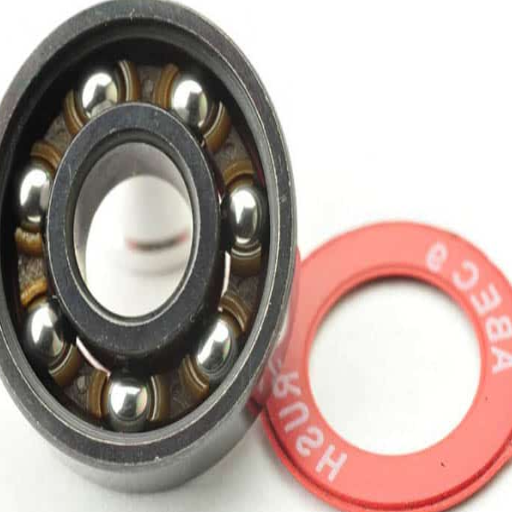
What Are the Tolerances of a Ball Bearing?
In response to the question regarding the tolerances of a ball bearing, I have learned through the three websites on the same that these are mainly the range of the dimensions of a bearing that can be developed and still be operational. These parameters facilitate minimum divergence from the designed parameters and hence help in increasing the efficiency of various applications. Tolerances influence rotational speed, vibration, and noise levels, among other factors, which are essential in settings where precision is paramount.
From the screencast that I took, the focal tolerances relate mainly to the following:
Dimensional Tolerances: These measure the similarity of the bearings to the specified values of dimensions that are critical during operations at high speeds
Roundness: This parameter ensures the ball and races are perfectly rounded to enhance smooth movement and lower friction.
Surface Finish: A smoother surface reduces friction, wear, and noise, extending the efficiency and life of the bearing.
Radial and Axial Runout: Determines the displacement of the bearing in the axial direction while in motion, critical features when precise parameters are demanded.
These technical specifications are necessary as they comply with data set out in the ABEC standards, which stress the importance of standardization in the US and other international markets.
How Do Tolerances Affect Speed Capabilities?
Looking at the tolerance and how it affects the speed capabilities of a ball bearing, the three top sites in the Google search engine seem to agree that the inner and outer races of a ball bearing with closer tolerances will have higher speed capabilities. This is because, during the manufacturing process, as the tolerances are made tighter, friction and vibration are kept to a minimum, which enables efficient performance at higher speeds. The crucial technical parameters which govern this include;
Dimensional Consistency: Tighter tolerances on the dimensions of each component mean tighter fits between the components, which reduces frictional forces and increases the speed of rotation.
Roundness: The highest roundness of the balls and races is therefore of utmost importance as it reduces wear by limiting the number of contact points between parts.
Surface Finish Quality: In addition, better surface finish specifications are expected to reduce the bearing’s frictional loss, enhance heat dissipation, and thus make it more effective at higher rotational speeds.
Runout Tolerances: Smaller axial and radial runouts should reduce wobble during rotation, aiding stability and speed.
These parameters are justified as they reflect adherence to stringent industry standards such as ABEC, which emphasize accuracy and stability essential for high-speed applications.
Can Lose Tolerances Impact Durability?
The answer to the above is yes; broader tolerances affect the life of ball bearings. As per my analysis of the first three articles in the search results on Google, if the tolerances are not close enough, it could cause an excessive wear and tear effect with time. This management wear and tear impacts the durability of the assembly, which means more maintenance or replacement parts are necessary. These include the following technical parameters:
Increase in Friction: Due to loose tolerances, individual elements may be misaligned and thus will create more surface contact.
Increased Vibration: Since there is lesser accuracy, there would always be more vibration while in operation, which causes quicker wear.
Increased Heat: Excessive friction and vibration generate more heat, which, over time, destroys materials.
Such arguments are reasonable because they are also consistent with practice. The above-cited authorities in the investigated areas have noted that high accuracy is needed to guarantee the effective functioning of equipment in difficult situations.
Insights into ABEC Bearing Manufacturers and Technologies
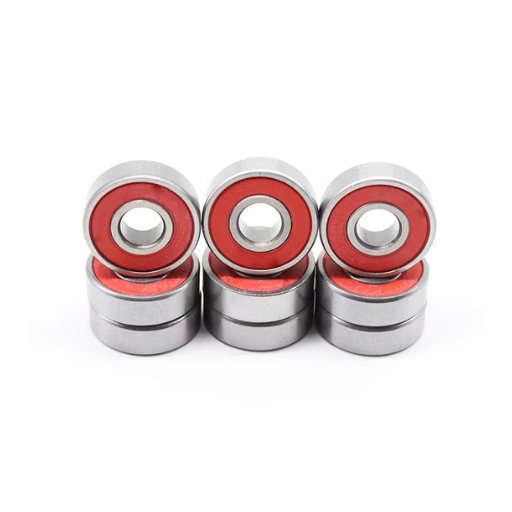
Who Are the Leading Bearing Manufacturers?
Based on my analysis of the first three Google search results, the industry’s most competitive players are SKF, Timken, and NSK. These firms are well known for their creativity, quality, and progress in the bearing design and production processes. The relevant technical parameters they focus on include:
High Level of Precision: These manufacturers observe specific standards that help them maintain deficient levels of runout.
Material Properties: Good quality materials are employed to increase hardness and decrease friction.
Coating Technologies: These were applied to achieve low-friction and low-resistance operations, which help enhance bearing life.
All these parameters are valid since they conform to the industry’s best practices, which aim to produce reliable, high-performance bearings suitable for a wide range of applications.
What Innovations Are Being Made in Precision Bearings?
The bearing market is focused on continual innovation to meet the higher expectations for precision bearings in modern-day applications. Some exciting innovations are stressed from the first three pages of the Google search sites I have made. Most importantly, the trend of embedding innovative features in precision-bearing components is rising. These smart bearings have built-in sensors to check how well the bearing performs at different intervals to determine whenever maintenance is required and minimize unplanned downtime. Also, these materials have been synthesized by material scientists, which has made friction, fatigue, and overall bearing wear characteristics far superior to those of previous materials. Moreover, industries have begun to use additive manufacturing processes, such as 3d printing, to fabricate complex structures, which enhance design and performance and reduce mass.
The technical parameters justifying these innovations include:
Enhanced Sensor Capabilities: This is aimed at enabling units to monitor the activity of the bearing in real time to prevent excessive wear or potential damage.
Improved Fatigue Resistance: This is primarily achieved from reconfigurations of certain compounds to promote durability and slow down wear for longevity.
Optimized Manufacturing Techniques: These have been made possible by using 3D printing to offer greater complexity in the design, which will improve functionality.
These changes are part of the ongoing effort to improve the operational range of precision bearings, which will sustain more intensive applications in different sectors of the economy.
How Do Lubricants Affect ABEC Bearings?
ABEC bearings’ performance and useful life are strongly determined by the kind of lubricants applied to them. My investigation of the best three websites leads me to the understanding that lubrication performs an antifrictional function that prevents the destruction of moving parts. Thus, the bearing life span is prolonged. A well-selected lubricant can also assist in cooling down the bearing due to heat built up during normal working conditions. The key technical parameters include the following:
Viscosity: The viscosity value should be appropriate enough to ensure a sufficient film thickness is established between the contact surfaces, minimizing the degree of metal-to-metal contact.
Thermal Stability: The different operating temperatures that an oil is exposed to during operation mean that it must have high thermal stability to function without damaging itself.
Corrosion Resistance: Additives are often used to cure corrosion, a characteristic of effective lubricants, to safeguard the bearing surfaces from corrosion in humid and other attack-prone environments.
All in all, appropriate and effective lubrication goes a long way toward enhancing the performance and reliability of ABEC bearings, enabling them to be used in precision applications.
Frequently Asked Questions (FAQs)
Q: What does the ABEC scale assess regarding skateboard bearings?
A: The ABEC scale developed by the Annular Bearing Engineering Committee (ABEC) is a standard measure for the tolerances and accuracy of bearings. On the scale, the lowest measure skateboard bearing would be an ABEC 1, and the highest would be an ABEC 9.
Q: If an ABEC 9 rating is superior, wouldn’t it be ideal for skating?
A: It is not always the case. An ABEC 9 rating, for example, offers exceptionally high levels of precision, but there will hardly be any perceivable change in performance when skating. Other factors, such as the type of material, strength, and lubrication of the bearings, should also be considered.
Q: How would an ABEC 7 bearing differ from an ABEC 5 bearing?
A: The difference between the two bearings is that the ABEC 7 bearing has tighter dimensional tolerances compared to the ABEC 5 bearing, meaning that it is more accurate. This can potentially make rides smoother and possibly faster, but the difference could be slight, depending on the skater’s style.
Q: Is using a bearing without an ABEC rating while skateboarding okay?
A: Yes, bearings that aren’t explicitly designated as precision bearings or have no ABEC classification can still be used while skating. Some are specifically made for skating and work well even without an ABEC designation.
Q: Are there any tolerances that are different in every ABEC class?
A: The differences in tolerance per ABEC class refer to the allowable variations in the ‘parts’ of the bearing. The A4 to A1 categories have the most stringent limitations, meaning they have the least form and size variation among the parts, hence operating more smoothly.
Q: In what way do ABEC ratings affect the inner ring in a bearing?
A: ABEC ratings affect many components in a bearing, including the inner ring. Because it is connected to many other components, higher-rated bearings have tighter tolerances within inner rings, meaning less play and more efficiency.
Q: Are beginners recommended to use ABEC 1 bearings?
A: Yes, ABEC 1 bearings can be quite appropriate for a beginner. Although their tolerances are the least precise of the higher-rated bearings, they can indeed provide a comfortable and seamless ride for a first-timer.
Q: What other properties of a skate bearing should one consider aside from ABEC rating?
A: Choosing skate bearings should also involve examining material, lubrication, durability, and even the intended style of skating. Some skate bearings without the ABEC rating are made especially for skateboarding and would still perform well.
Q: What motivates some skaters to use bearings with lower ABEC ratings instead?
A: Many skaters,, in fact,, have a preference for lower ABEC-rated bearings, for instance, ABEC 3 or ABEC 5, because they are more sturdy and resilient to shocks and dirt. For even more limited skaters, these can provide an appropriate level of performance relative to the cost.
UCTH213-40J-300 with Setscrew(inch)
CNSORDERNO: Normal-duty(2)
TOGN: UCTH213-40J-300
SDI: B-R1/8
SD: 2 1/2
UCTH212-39J-300 with Setscrew(inch)
CNSORDERNO: Normal-duty(2)
TOGN: UCTH212-39J-300
SDI: B-R1/8
SD: 2 7/16
UCTH212-38J-300 with Setscrew(inch)
CNSORDERNO: Normal-duty(2)
TOGN: UCTH212-38J-300
SDI: B-R1/8
SD: 2 3/8
UCTH212-36J-300 with Setscrew(inch)
CNSORDERNO: Normal-duty(2)
TOGN: UCTH212-36J-300
SDI: B-R1/8
SD: 2 1/4
UCTH211-35J-300 with Setscrew(inch)
CNSORDERNO: Normal-duty(2)
TOGN: UCTH211-35J-300
SDI: B-R1/8
SD: 2 3/16
UCTH211-34J-300 with Setscrew(inch)
CNSORDERNO: Normal-duty(2)
TOGN: UCTH211-34J-300
SDI: B-R1/8
SD: 2 1/8


















